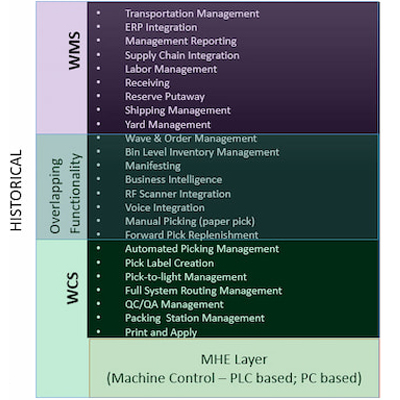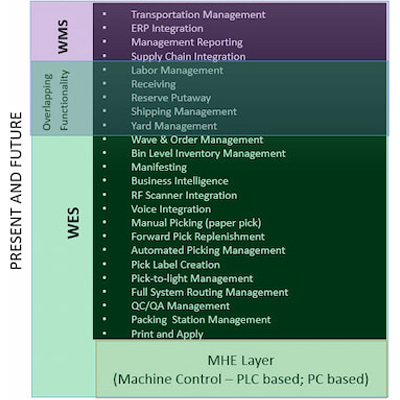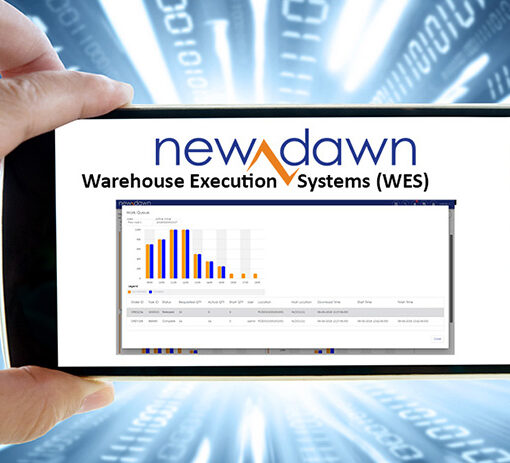How to Save Your Warehouse Management System (WMS) With a Warehouse Execution System (WES)

In most mature order fulfillment operations, the warehouse management system (WMS) plays a critical role in controlling the flow of goods throughout the four walls of your warehouse.
But while the WMS typically forms a cornerstone of an operation’s software ecosystem, they are not without their limitations.
Below, we look at what a WMS does and doesn’t do, what its limitations are, and how implementing the right warehouse execution system (WES) can help you free your WMS to do what it was designed and built to do.
Warehouse Management System (WMS) Limitations
In many operations, especially older or more established businesses, the WMS system has become something of a third rail: Something that everyone knows not to touch.
Yes, there may be changes that you would like to make to the system—for example, new functionality or reports that you would consider adding into the software. But making these changes is often easier said than done. Exactly why this is true will depend on your WMS and how it came to be.
Many legacy WMS systems, for example, were custom built years, if not decades, in the past, often by software engineers who are no longer with the company. Without the software’s original architect, making any sort of adjustment to the system would be time consuming, inefficient, and would introduce the risk that an error will be made which could bring the entire operation to a screeching halt.
On the other hand, perhaps you purchased your WMS from a vendor who is perfectly capable and willing to write whatever custom code you request. Unfortunately, this custom coding often comes at such a high cost that it simply isn’t viable for most operations. In these cases, it’s often more cost-effective to deal with the limitations of the software than it is to pay to fix them.
And yet, simply shrugging and accepting an inefficient status quo is no way to run a business, especially in an industry that is evolving as rapidly as order fulfillment. That’s why many operations choose to implement a warehouse execution system in order to augment their existing WMS.
What is a Warehouse Execution System (WES)?
In simple terms, the warehouse execution system (WES) can be thought of as a conductor, orchestrating the different zones and equipment and workstations within your facility. While the WMS is concerned with the flow of inventory and goods, the WES is typically concerned with issues of labor and equipment and is designed to ensure that all the systems within your operation are working at peak performance.
How the Right WES Can Save Your WMS
It is important to note that a warehouse execution system is meant to complement—and not replace—your WMS. It achieves this in several ways.
First, while there will occasionally be some overlap of available functionality between the two systems, WES systems are designed to perform very different functions than the WMS. Wave building, order processing, picking management, and individual equipment controls are all typically functions of the WES, but not typically functions of the WMS.
This means that deploying a WES in your operation offers you a way of adding in processes or functionality that your WMS either doesn’t do or doesn’t do well—typically in a more cost-effective manner than trying to code this functionality directly into the WMS. And because you are not manipulating your WMS’s code, you also dramatically reduce the risk of compromising your system.
The WCS, WES and WMS Progression


Is a WES right for your operation?
If your facility is currently only leveraging a WMS, then adding a WES into the mix will give you a whole new layer of functionality to make your business more productive and efficient, without the cost, time investment, and risk that customizing your WMS might entail. The same holds true if your operation is leveraging a warehouse control system (WCS) alongside your WMS.
In selecting a WES for your operation, there are certain key characteristics that you should look for in any solution you consider. Modularity is one of the most important, as it allows you to purchase only the functionality you need at any given time, secure in the knowledge that you can add additional modules and functionality as your operation changes. The inclusion of emulators is another, as this ensures that the system has been fully tested against peak (and above-peak) conditions so that it is ready to run on day one.
Finally, because you don’t want to be limited to only utilizing technology from a specific equipment or automation manufacturer, you should also look for a system that gives you the flexibility of choice. The best WES software will, at its heart, be manufacturer agnostic so that you can pick and choose the exact right equipment, even if that means you’re leveraging systems from a few different manufacturers.
A trusted software designing team can help you understand your options and guide you to the solution that makes the most sense for your business. Contact us today to speak with a member of the New Dawn Team.


